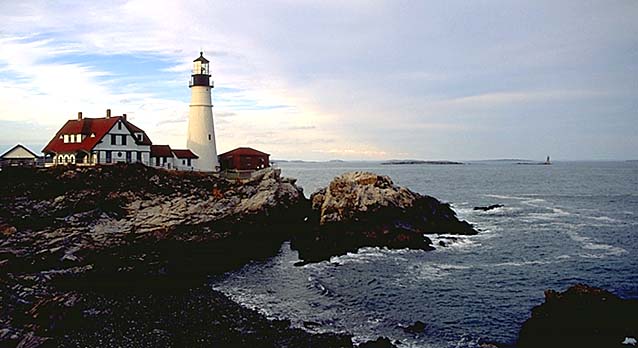

The District of Maine was a part of Massachusetts when the merchants of Portland first petitioned Boston for a lighthouse in 1786. Construction began a year later but was quickly stopped for lack of funds. Soon after George Washington became the first president in 1789, the federal government took over the construction and operation of lighthouses, and Congress authorized $1500 to finish Portland Head Light.
Built on the cheap with light rubblestone and lime, Portland Head was a 72 foot tower that first shone its light in January of 1791. Over the years Portland Head has undergone many changes. The tower was lowered by 25 feet in 1813; in 1850 a new lantern was installed with a fourth-order fresnel lens; in 1864 twenty feet were added back onto the tower�'s height and the lens upgraded to a second-order. In 1882 the twenty feet were once again removed from the tower and the lens returned to fourth-order power. This last change was very unpopular, and within a year the tower was raised yet again by twenty feet and the more powerful lens restored. Portland Head changed little until 1989, when the old fresnel was removed and replaced with an airport-style revolving beacon. The tower today bears the scars of it's many changes in height.
Today the isolated spot where Longfellow penned his famous lighthouse poem is one of Maine�s most popular tourist attractions. Lines of tour buses glide through Fort Williams Park to the large parking lot near the lighthouse. After extensive renovation, the keeper�s quarters opened as a museum in 1992, and there is a gift shop on the grounds as well.